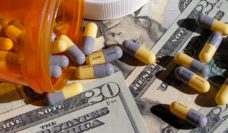For the last several decades, insulin prices have steadily increased to the point where individuals who depend on the medication are now often unable to afford it. Underusing insulin has become a growing problem for people managing their diabetes. A recent study found that one out of every four people who use insulin ration or skip insulin doses to make their supplies last longer.
If you’re interested in how the cost of insulin is affecting every-day people, scroll through Twitter #insulin4all for a vivid picture. Millions of users tweet about their difficulty coping with diabetes and paying for the drug they need to survive. One study found that between March 26, 2013 and January 19, 2014 more than 2.5 million Twitter users tweeted about diabetes. On May 9, 2019, one person tweeted about “a caravan of Americans” with Type I diabetes who traveled to Canada to get insulin that was “dramatically” cheaper than it would be in the US. Insulin costs 10 times more in the US than it does in Canada.
Unlike most developed nations, the US doesn’t regulate the cost of pharmaceuticals, so most drugs in America are more expensive than in Canada or Europe. Even Americans who have health insurance have a hard time paying for insulin. Insurers typically only covers a portion of the cost–co-pays and co-insurance can still amount to hundreds of dollars for just one insulin prescription.
A simple Google search for “Go Fund Me Diabetes” reveals dozens of accounts created to help pay for the drug. One 21-year-old user raised $1,500 to cover the cost his insulin; his employer- sponsored health insurance only covered a portion of the cost.
Warren Kaplan, a professor at Boston University’s School of Public Health specializing in pharmaceutical policy, believes the drug patent system is a big part of the problem. Three drug companies–Sanofi, Eli Lilly, and Novo Nordisk–make most insulin products currently on the market. To keep the price high, in the past they have changed single molecules in the formula to re-patent the drug, making it impossible for other companies to enter the market.
Insulin has been around since the 1920’s and experts say the formula hasn’t changed much, despite the refrain from pharmaceutical company executives that high prices allow for research and innovation.
Insulin is a biologic product, genetically engineered. Unlike other drugs like Aspirin that are easily replicated chemically, it’s difficult to create a “generic” for insulin–no two doses are truly identical. According to Kaplan, the three companies charge high prices simply “because they can,” having blocked competition.
Kaplan also identified lack of transparency in pricing as another part of the cost problem. With so few regulations in place to control drug prices, we don’t know what factors contribute to the high cost of drugs like insulin. This means that policymakers have no way of knowing what drugs should actually cost when addressing price hikes.
The cost of insulin jumped from $12.01 to $54.48 per milliliter between 2007 and 2014 in Massachusetts, without explanation. Insulin has been around since the 1920s and experts say the formula hasn’t changed much, despite the refrain from pharmaceutical company executives that high prices allow for research and innovation.
Kaplan says, “It’s going to take time,” to lower prices. “It’s a complicated system, and there will need to be several remedies at several levels.” In a rare glimpse of bipartisanship, it seems that drug pricing is something both Republicans and Democrats want to tackle. In April, the Ways and Means Committee unanimously passed the STAR Act which would, among other things, require drug companies to justify large price increases for existing drugs and high launch prices for new ones.
Photo by Aidan Bartos on Unsplash














